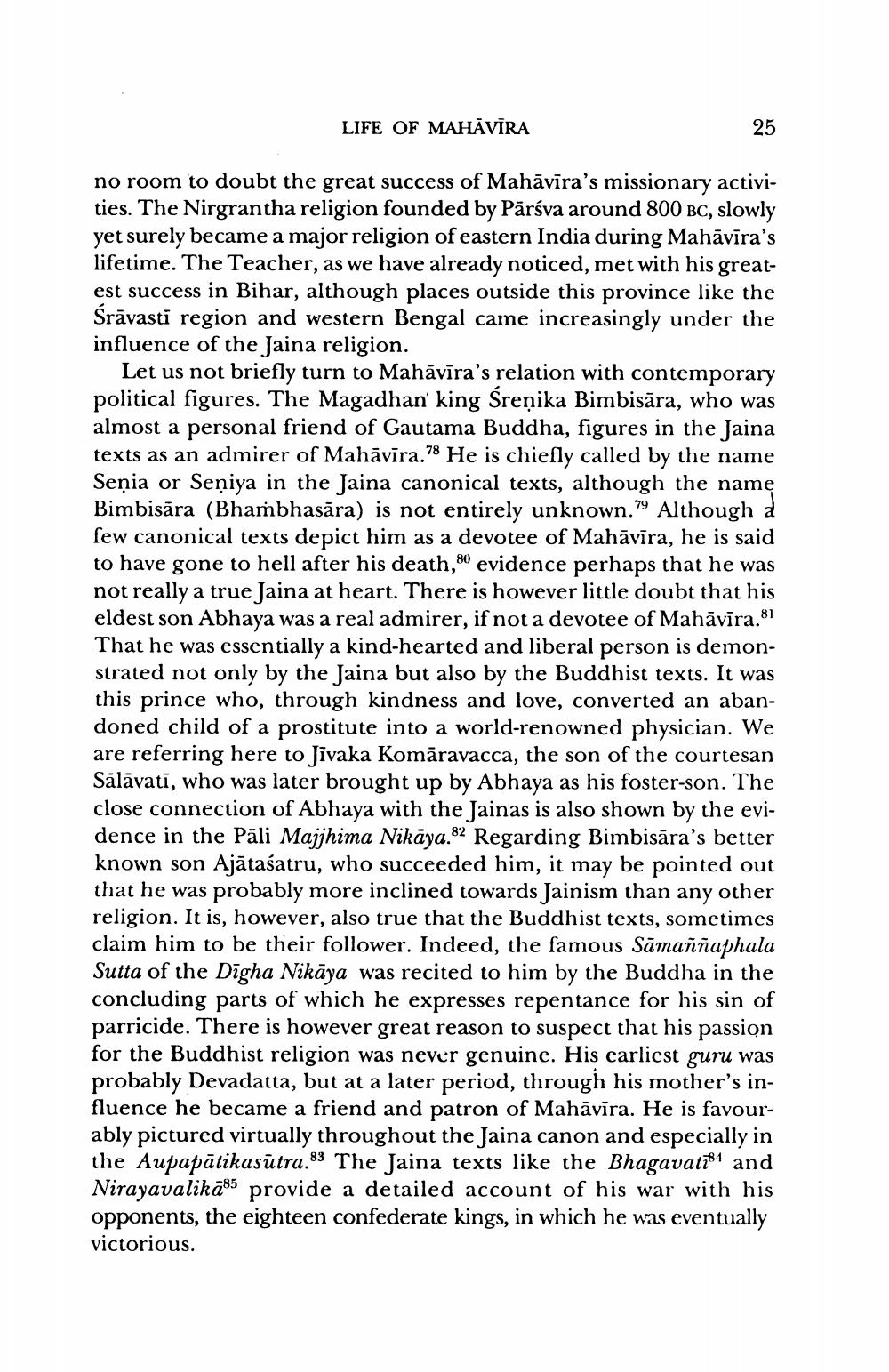________________
LIFE OF MAHĀVĪRA
25
no room to doubt the great success of Mahāvīra's missionary activities. The Nirgrantha religion founded by Pārśva around 800 BC, slowly yet surely became a major religion of eastern India during Mahāvīra's lifetime. The Teacher, as we have already noticed, met with his greatest success in Bihar, although places outside this province like the Śrāvasti region and western Bengal came increasingly under the influence of the Jaina religion.
Let us not briefly turn to Mahāvīra's relation with contemporary political figures. The Magadhan' king Śreņika Bimbisāra, who was almost a personal friend of Gautama Buddha, figures in the Jaina texts as an admirer of Mahāvīra.78 He is chiefly called by the name Senia or Seņiya in the Jaina canonical texts, although the name Bimbisāra (Bhambhasāra) is not entirely unknown.79 Although a few canonical texts depict him as a devotee of Mahāvīra, he is said to have gone to hell after his death,80 evidence perhaps that he was not really a true Jaina at heart. There is however little doubt that his eldest son Abhaya was a real admirer, if not a devotee of Mahāvīra.81 That he was essentially a kind-hearted and liberal person is demonstrated not only by the Jaina but also by the Buddhist texts. It was this prince who, through kindness and love, converted an abandoned child of a prostitute into a world-renowned physician. We are referring here to Jivaka Komāravacca, the son of the courtesan Sālāvatī, who was later brought up by Abhaya as his foster-son. The close connection of Abhaya with the Jainas is also shown by the evidence in the Pali Majjhima Nikāya.o? Regarding Bimbisara's better known son Ajātaśatru, who succeeded him, it may be pointed out that he was probably more inclined towards Jainism than any other religion. It is, however, also true that the Buddhist texts, sometimes claim him to be their follower. Indeed, the famous Sāmaññaphala Sutta of the Dīgha Nikāya was recited to him by the Buddha in the concluding parts of which he expresses repentance for his sin of parricide. There is however great reason to suspect that his passion for the Buddhist religion was never genuine. His earliest guru was probably Devadatta, but at a later period, through his mother's influence he became a friend and patron of Mahāvīra. He is favourably pictured virtually throughout the Jaina canon and especially in the Aupapātikasūtra.83 The Jaina texts like the Bhagavat784 and Nirayavalikā85 provide a detailed account of his war with his opponents, the eighteen confederate kings, in which he was eventually victorious.




